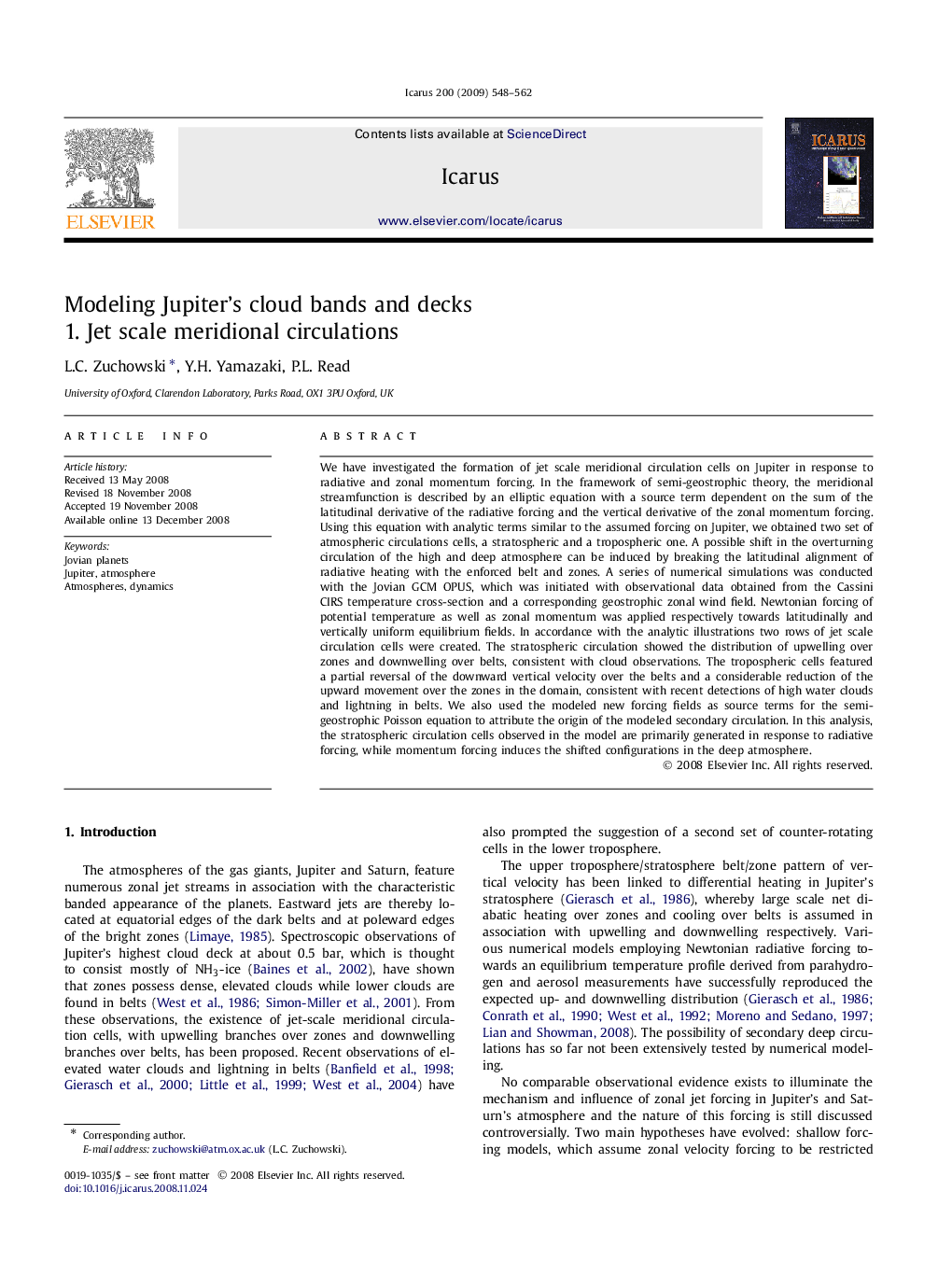| Article ID | Journal | Published Year | Pages | File Type |
|---|---|---|---|---|
| 1774641 | Icarus | 2009 | 15 Pages |
We have investigated the formation of jet scale meridional circulation cells on Jupiter in response to radiative and zonal momentum forcing. In the framework of semi-geostrophic theory, the meridional streamfunction is described by an elliptic equation with a source term dependent on the sum of the latitudinal derivative of the radiative forcing and the vertical derivative of the zonal momentum forcing. Using this equation with analytic terms similar to the assumed forcing on Jupiter, we obtained two set of atmospheric circulations cells, a stratospheric and a tropospheric one. A possible shift in the overturning circulation of the high and deep atmosphere can be induced by breaking the latitudinal alignment of radiative heating with the enforced belt and zones. A series of numerical simulations was conducted with the Jovian GCM OPUS, which was initiated with observational data obtained from the Cassini CIRS temperature cross-section and a corresponding geostrophic zonal wind field. Newtonian forcing of potential temperature as well as zonal momentum was applied respectively towards latitudinally and vertically uniform equilibrium fields. In accordance with the analytic illustrations two rows of jet scale circulation cells were created. The stratospheric circulation showed the distribution of upwelling over zones and downwelling over belts, consistent with cloud observations. The tropospheric cells featured a partial reversal of the downward vertical velocity over the belts and a considerable reduction of the upward movement over the zones in the domain, consistent with recent detections of high water clouds and lightning in belts. We also used the modeled new forcing fields as source terms for the semi-geostrophic Poisson equation to attribute the origin of the modeled secondary circulation. In this analysis, the stratospheric circulation cells observed in the model are primarily generated in response to radiative forcing, while momentum forcing induces the shifted configurations in the deep atmosphere.
